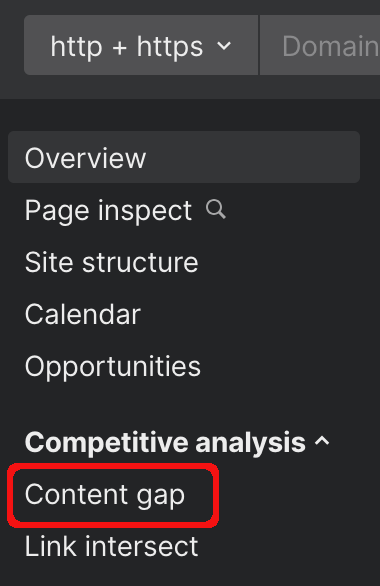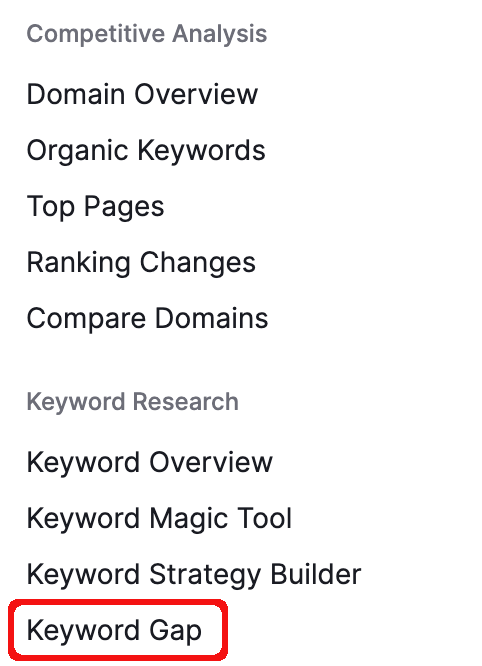

Around 66% of businesses report that original content creation made the most positive impact in 2025 for their brand. However, finding something your competitors haven’t covered can be a daunting task at times. That’s where content gap analysis steps in.
It identifies the missing topics and competitive blind spots that limit your visibility. For tech brands, these gaps often hold the difference between ranking for curiosity and ranking for conversion.
Finding what your competitors missed and turning it into your next source of qualified traffic can redefine your SEO strategy. This guide will help you navigate it effectively by answering questions like:
Let’s take a closer look at the key information to keep in mind.
A comprehensive content gap analysis reveals how your site communicates value compared to competitors. By mapping your pages against theirs, you start to see patterns that explain performance differences. This includes:
Most tech brands discover three kinds of gaps during this process:
This helps teams at tech companies understand not only what’s missing but why those gaps exist. From here, they can resolve misaligned messaging or outdated targeting.
Start by opening Ahrefs and navigating to Site Explorer.

Enter your domain, then select Content Gap under the Competitive Analysis menu. Add three to five of your closest competitors who consistently rank above you for core keywords.

Ahrefs will generate a list of queries that your competitors rank for that your domain doesn’t. You can then sort by “Traffic Potential” to surface the keywords that could bring users who are likely to convert, not vanity impressions.
In SEMrush, go to Keyword Gap under Keyword Research.


Input the same domains and switch the filter to “Missing.” This isolates opportunities where your competitors hold ranking positions you lack.

Under “Top Opportunities,” toggle between "Missing" and "Weak” to find terms where your pages nearly rank but need optimization or stronger internal links.

Once you have both lists, export them into a spreadsheet and tag each keyword by:
Review SERP results for those queries directly: what types of pages rank? For example, if competitors rank with in-depth tutorials and you only have product descriptions, that’s a clear gap to take advantage of.
Next, open the top competitor pages for your highest-value gaps. Note how they structure subtopics and address buyer pain points. This will also help you find new keyword angles to target in the future.
Sorting by search volume alone can waste resources on low-value visibility. Instead, evaluate each opportunity based on how directly it supports your product and how likely it is to attract qualified leads.
Start with traffic potential by checking Ahrefs or SEMrush metrics for estimated monthly searches and clicks. A keyword might show high volume but low click potential if Google surfaces too many AI summaries or rich results. Prioritize the terms that still drive users to your pages.
Next, assess business value. Ask yourself whether the keyword connects naturally to your solution. For example, “API error codes” might bring general traffic, but “API monitoring tools” could lead to higher conversions.
Finally, gauge conversion likelihood. Decision-oriented phrases like “pricing,” “best,” or “compare” typically carry more intent from users to act. You can then prioritize keywords that:
Start by sorting your prioritized keywords into themes, such as each representing a:
Assign every topic a goal, like awareness or product adoption. From there, decide on the content format. Informational queries fit educational blog posts or tutorials. Comparative keywords often work best as landing pages or side-by-side feature breakdowns. Transactional searches deserve direct conversion paths like demo pages or pricing sections.
You can then begin to build a realistic timeline. Publishing everything at once spreads effort too thin, so begin with the highest-impact gaps you identified earlier. Assign owners for each deliverable (such as writers or designers) and track progress in a shared dashboard.
For example, a tech company might discover that competitors rank for “workflow automation comparison” while they only target broad awareness terms. By creating a detailed comparison page and linking it to existing solution content, they can capture users already evaluating and guide them directly toward a demo or trial.
Connect newer, high-value pages to older posts with relevant anchor text so link equity flows naturally through your site. This helps search engines understand relationships between topics and rewards depth over quantity.
Group pages under a primary theme, such as “cloud security” or “API performance,” and link them back to a central hub. That structure signals expertise to both users and search engines, helping your cluster pages rise in rankings.
Be sure to revisit older pages regularly. Many already attract impressions but underperform because they’re missing updated:
Refreshing those posts with clearer messaging and strategic links to your new content strengthens relevance and helps build further authority.
Search behavior changes quickly, especially in tech, where new tools and trends appear every quarter. Running audits every few months keeps your strategy aligned with what users are searching for now, not what they searched for last year.
You can use Ahrefs or SEMrush to look for new queries rising in relevance or pages losing traction. These shifts often signal where competitors are expanding coverage or where fresh content formats are outperforming yours.
It’s also recommended to keep a living spreadsheet of every published page and its target keywords. Be sure to note the last update date and performance trend, which will help you determine which updates maintain authority and which pages need rework.
A strong content gap analysis shows where your site loses visibility, which pages deserve attention, and how to align content with real buyer intent. When refined through regular audits, it becomes a living system that keeps your SEO strategy relevant and competitive. To recap:
Unlock hidden opportunities in your content strategy with a tailored Content Gap Analysis from Segment. Schedule a consultation today to see how we identify missed topics, align content with buyer intent, and help tech brands turn visibility gaps into measurable growth.
What is a content gap analysis in SEO?
A content gap analysis identifies topics, keywords, and search intents your competitors rank for that your site doesn’t. It exposes missed opportunities to capture qualified traffic and strengthen your search presence.
How often should tech companies run a content gap analysis?
Running one every quarter keeps your strategy aligned with changing search behavior. Frequent reviews help you spot new keyword trends, shifting user intent, and competitor moves before they affect visibility.
Which tools are best for content gap analysis?
Ahrefs and SEMrush offer the most complete view of your competitive landscape. Both show missing keywords, weak pages, and content overlaps so you can target high-value opportunities faster.
Can content gap analysis improve conversions, not just traffic?
Yes. Filling mid- and bottom-funnel gaps turns visibility into action by addressing what buyers need before they choose a solution. The right content attracts visitors ready to convert, not just browse.


